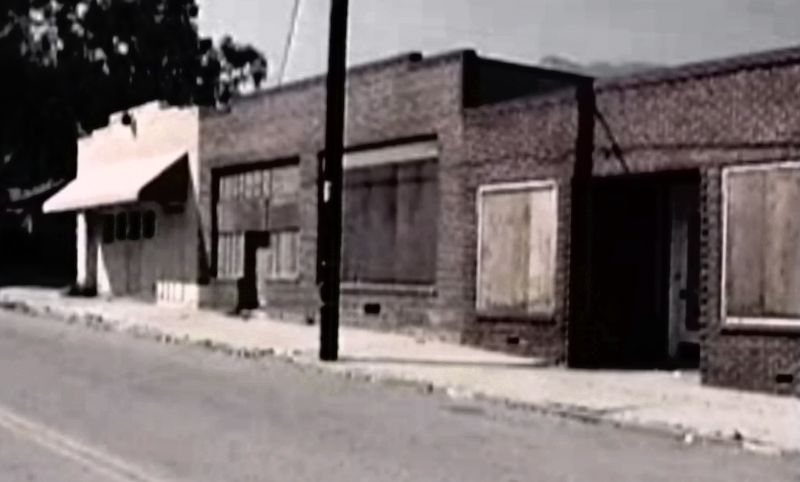|
|
HISTORY OF THE SANTA CLARITA VALLEY BY JERRY REYNOLDS
[NEXT] [PREVIOUS] [CONTENTS] [SEARCH]58. Pistoleros
"All the world likes an outlaw. For some damn reason they remember 'em."
— Jesse James*See note below
Jenks Harris thought himself a worthy successor of James, or perhaps of Tiburcio Vasquez. Putting together a six-man gang, the tall, slender Venturan swept down on the Fillmore State Bank in Piru and carted off $6,000. The loot was loaded into saddlebags, and the desperadoes headed into the wilds of Castaic Canyon on horseback.
The robbery did not occur in the heyday of the outlaws, but on December 11, 1922.
Hot on the bandits' trail was Constable Jack Pilcher of Newhall, who cornered the gang in the Cienega region. A lengthy shootout followed, during which sheriff's deputies reinforced the local constabulary. But the outlaws slipped away with the coming of night.
The next day Harris was arrested while making some purchases at the general store of Anthony H. Schuyler in Castaic. The rest of the boys were rounded up within a week. So much for old-style bank robbery.*
In the days of Prohibition, the Sheriff's Department had what was called a "dry squad," headed up locally by an officer with the familiar name of James Bond. Bond and Pilcher made quite a team, breaking up stills from one end of the valley to the other.
The most elusive was a cooker mounted on the back of a flatbed truck in San Francisquito Canyon. When the lawmen came roaring up, the moonshiners simply drove all of the evidence up to Lake Elizabeth.
The most spectacular local robbery occurred during the early evening of November 10, 1929. After pulling into the Saugus Station for water, a massive, three-barreled steam locomotive of the 5000 series left at 7:40 p.m., rounded the bend at Bouquet Junction, then started to gather speed as it headed out Soledad Canyon.
Suddenly Engine No. 59 began to lurch violently back and forth, then, after chewing up six hundred yards of track, crashed over onto its side as a torrent of red sparks flew from the spinning drive wheels. The engineer narrowly escaped being scalded to death as his steamer slid to a halt behind Roy Baker's rodeo arena (Saugus Speedway today).
Somehow the passenger cars remained upright, although there was total panic aboard. Into this bedlam stepped a five-foot, six-inch man with an air of authority. Quickly he calmed the hysterical women and nervous men, got them back on the Pullmans and, as soon as everyone was settled down, robbed them of all their valuables at the point of a .38-caliber revolver. He then vanished into the inky darkness.
Soon on the scene was Deputy Jack Pember, who identified the gunman as Thomas E. Vernon, an itinerant cowboy who liked to call himself "Buffalo" Tom. Pember found that Vernon had broken into Southern Pacific's Saugus Yard tool shed and lifted a wrench and spike puller. Vernon then yanked the bolts that held the rails together and hid in the bushes.
After the robbery — which netted him only three hundred dollars — Vernon walked over the low ridge to Wood's Garage, where he hitched a ride to Los Angeles with one Thomas Firth of Burbank. Vernon made up a story, telling Firth his daughter had been injured in a train wreck, and paid the man five dollars for a lift to the Children's Hospital.
Two weeks later Vernon derailed another train near Cheyenne, Wyoming and was plotting a third such act when he was captured at Pawnee, Oklahoma.
On Dec. 18, 1929, Tom Vernon was sentenced to life in Folsom Prison. He was released in the late 1950s and lived out his few remaining years in Sacramento, ultimately succumbing to tuberculosis.
*WEBMASTER'S NOTE.
Jenks: The section at the top in italics is inaccurate. Jenks Harris and his gang robbed $6,000 from the the Fillmore State Bank in Piru (Reynolds said $11,000) on December 11, 1922 (Reynolds said December 17, 1925), kidnapped the bank manager and his daughter, and fled by automobile to Los Angeles, where they were apprehended about a week later. Read about it [here]. It is possible Reynolds is confating and commingling a few different crime stories of the 1920s.
Vernon: Reynolds actually wrote that Vernon was released 35 years after he was incarcerated — which would be 1964 — "a small, nervous, aged, gray-haired man who died shortly thereafter of a venereal disease." However, subsequent information has come to light, demonstrating that Vernon was living with a family outside Sacramento in 1957-58, and that this family buried him after he died from TB in 1967. See his [death certificate].

©1998 SANTA CLARITA VALLEY HISTORICAL SOCIETY · RIGHTS RESERVED.
The site owner makes no assertions as to ownership of any original copyrights to digitized images. However, these images are intended for Personal or Research use only. Any other kind of use, including but not limited to commercial or scholarly publication in any medium or format, public exhibition, or use online or in a web site, may be subject to additional restrictions including but not limited to the copyrights held by parties other than the site owner. USERS ARE SOLELY RESPONSIBLE for determining the existence of such rights and for obtaining any permissions and/or paying associated fees necessary for the proposed use.